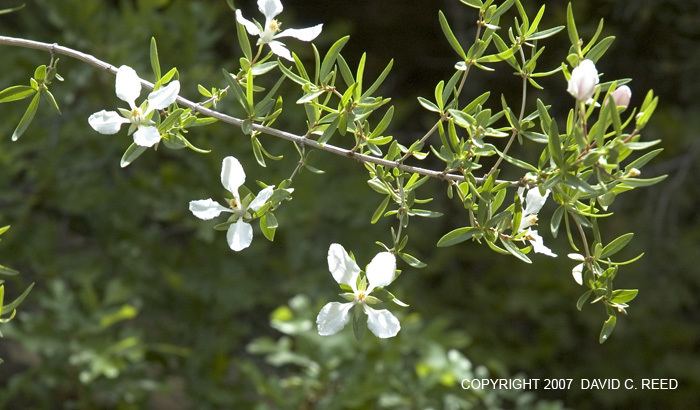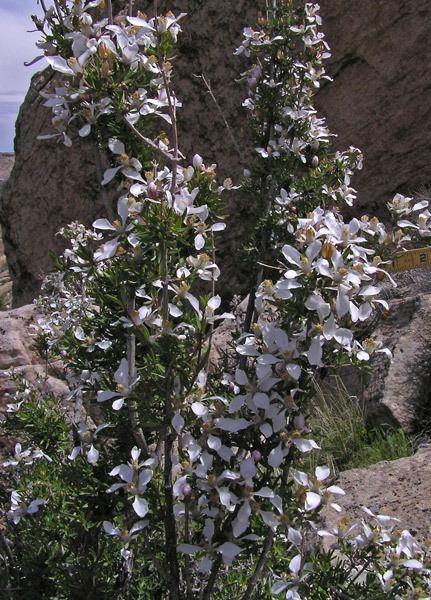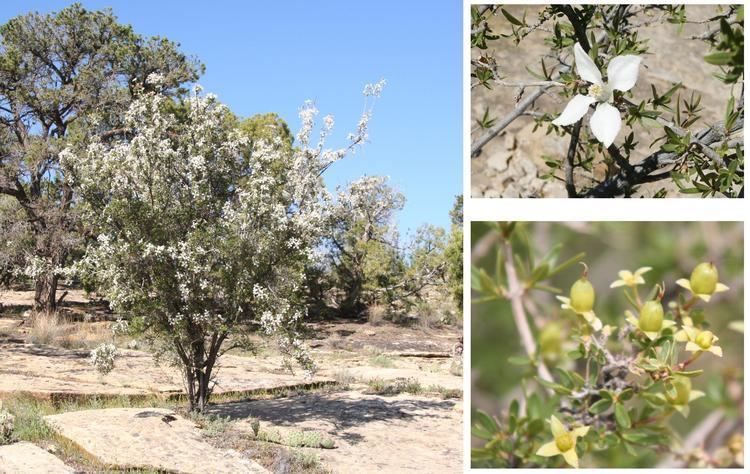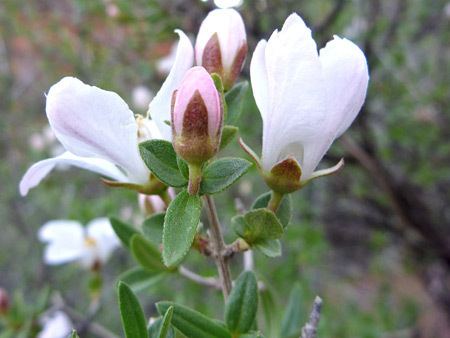Genus Fendlera Rank Species | ||
 | ||
Similar Fendlera, Fendlerella, Garrya wrightii, Cercocarpus montanus, Lycium pallidum | ||
Fendlera rupicola, commonly known as the cliff fendlerbush or the false mockorange, is a shrub that grows in dry locations in the south central montane regions of North America.
Contents

Description
The fendlerbush is a deciduous shrub that grows one to three metres tall. The branches are tough and wiry, grey with furrowed bark. The leaves are opposite, oblong, entire, thick and twisted, with three veins. The creamy-white flowers open at the end of short branches, either solitary or in groups of up to three. The four sepals are purplish, the four petals narrow to a claw at the base and there is a central boss with four styles and eight stamens. The fruits are capsules that remain on the plant for a long time.
Distribution

This species is found in mountainous areas of Texas, New Mexico, Colorado, Utah and Arizona and the northern parts of Mexico. It is common in the Trans-Pecos region and is also found in the Davis Mountains, the Chisos Mountains and the Guadalupe Mountains.
Habitat

The fendlerbush typically grows in semi-arid conditions in blue grama (Bouteloua gracilis) communities dominated by pinyon pine and juniper. It is found growing on dry rocky slopes, in deserts and on mesas. It often grows in association with oneseed juniper (Juniperus monosperma), alligator juniper (J. deppeana), true pinyon (Pinus edulis), gray oak (Quercus grisea), skunkbush sumac (Rhus trilobata), mountain mahogany (Cercocarpus breviflorus) and antelope bitterbrush (Purshia tridentata).
Traditional uses

